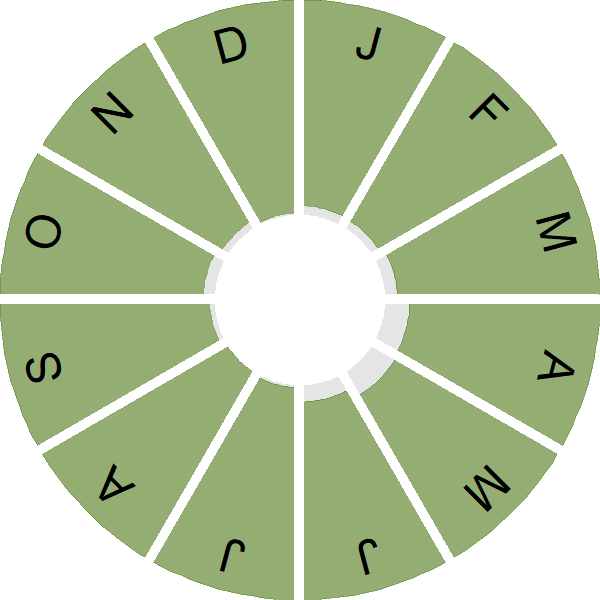Herring Gull
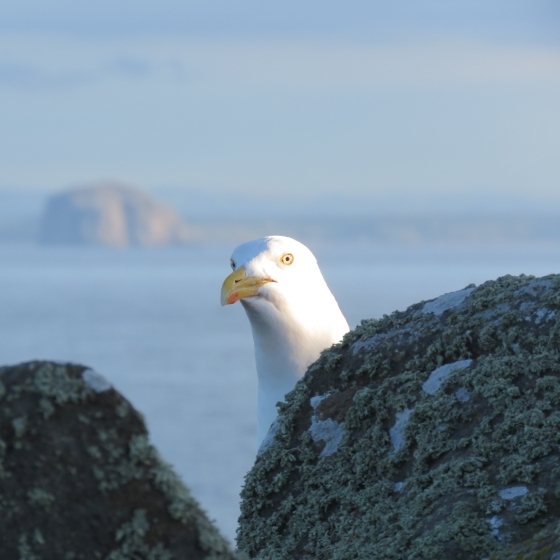
Introduction
A quintessential sound of the seaside, the beautiful pearly-grey backed and pink-legged Herring Gull is perhaps one of our most familiar.
The Herring Gull feeds mainly on marine vertebrates and invertebrates, with Green Shore Crab being a particular favourite. It is an opportunist, however, and will eat a wide variety of food and can be found feeding in large congregations at refuse dumps, taking advantage of the food we throw away.
Once confined to the coast as a breeding bird, small numbers of Herring Gulls can now be found breeding far inland.

Key Stats
Identification
ID Videos
This section features BTO training videos headlining this species, or featuring it as a potential confusion species.
Adult black-backed gulls
Common Gull & Herring Gull
Songs and Calls
Song:
Call:
Status and Trends
Conservation Status
Population Change
The Herring Gull has declined considerably since the 1969–70 Census, with the coastal population falling by more than 50% by the time of Seabird 2000 (1998–2002). Annual monitoring suggests that further declines have occurred since Seabird 2000 and the results from the recent Seabirds Count (2015–21) are expected to confirm the severity of this decline in coastal breeding Herring Gulls (JNCC 2022). Small numbers breed inland, usually on rooftops, where they are difficult to survey; hence the status of the overall UK population is less clear. It is believed that these populations are increasing but still make up only a relatively small proportion of the UK population and that the increases in urban areas do not compensate for the declines elsewhere, but further assessment and future monitoring of urban populations is needed.
Distribution
Herring Gulls are widely distributed throughout lowland areas of Britain, with the highest concentrations near the coast. In Ireland, the distribution is more coastal.. In the breeding season the distribution is predominantly coastal, but the species readiness to nest on buildings has allowed it to colonise urban areas.
Occupied 10-km squares in UK
2007/08–10/11
or view it on Bird Atlas Mapstore.
2008–11
or view it on Bird Atlas Mapstore.
European Distribution Map
Distribution Change
Herring Gull breeding populations have declined significantly in size but few colonies have been completely lost. The breeding distribution change map implies that the greatest losses have been in coastal areas of western Ireland and western Scotland. Gains shown in urban areas are indicative of the divergence in trends between increasing urban and declining rural breeding populations.
Change in occupied 10-km squares in the UK
from 1981–84 to 2007–11
or view it on Bird Atlas Mapstore.
from 1968–72 to 2008–11
or view it on Bird Atlas Mapstore.
Seasonality
Herring Gulls are recorded throughout the year.
Weekly pattern of occurrence
The graph shows when the species is present in the UK, with taller bars indicating a higher likelihood of encountering the species in appropriate regions and habitats.

Habitats
Breeding season habitats
Relative frequency by habitat
The graph shows the habitats occupied in the breeding season, with the most utilised habitats shown at the top. Bars of similar size indicate the species is equally likely to be recorded in those habitats.
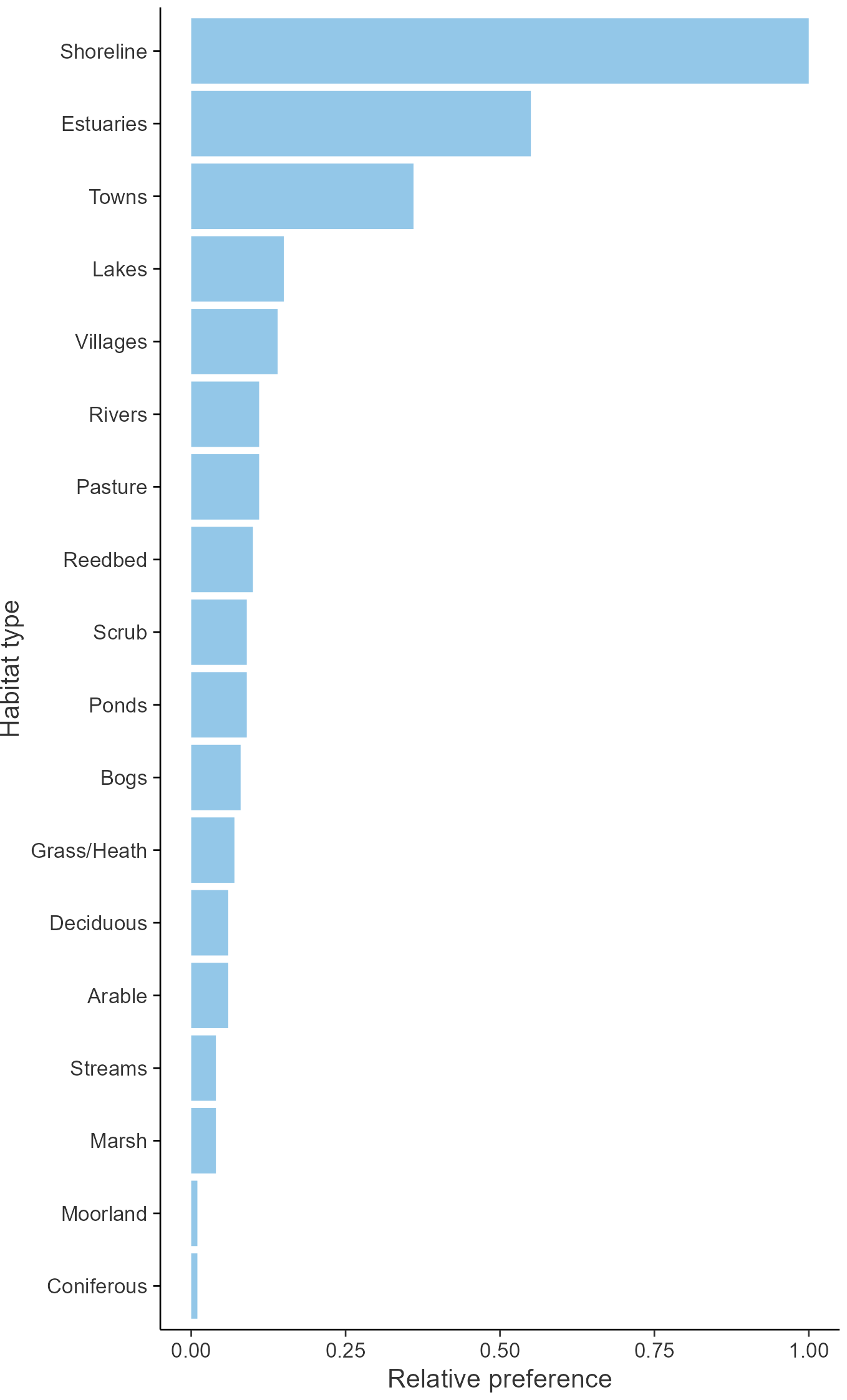
Movement
Britain & Ireland movement
European movements
EuroBirdPortal uses birdwatcher's records, such as those logged in BirdTrack to map the flows of birds as they arrive and depart Europe. See maps for this species here.
The Eurasian-African Migration Atlas shows movements of individual birds ringed or recovered in Europe. See maps for this species here.
Biology
Productivity and Nesting
Nesting timing
Egg measurements
Clutch Size
Survival and Longevity
Survival is shown as the proportion of birds surviving from one year to the next and is derived from bird ringing data. It can also be used to estimate how long birds typically live.
Lifespan
Survival of adults
Survival of juveniles
Biometrics
Wing length and body weights are from live birds (source).
Wing length
Body weight
Ring Size
Classification, names and codes
Classification and Codes
- Order: Charadriiformes
- Family: Laridae
- Scientific name: Larus argentatus
- Authority: Pontoppidan, 1763
- BTO 2-letter code: HG
- BTO 5-letter code: HERGU
- Euring code number: 5921
Alternate species names
- Catalan: gavià argentat de potes rosa
- Czech: racek stríbritý
- Danish: Sølvmåge
- Dutch: Zilvermeeuw
- Estonian: hõbekajakas
- Finnish: harmaalokki
- French: Goéland argenté
- Gaelic: Faoileag-an-sgadain
- German: Silbermöwe
- Hungarian: ezüstsirály
- Icelandic: Silfurmáfur
- Irish: Faoileán Scadán
- Italian: Gabbiano reale nordico
- Latvian: sudrabkaija
- Lithuanian: sidabrinis kiras
- Norwegian: Gråmåke
- Polish: mewa srebrzysta
- Portuguese: gaivota-argêntea
- Slovak: cajka striebristá
- Slovenian: srebrni galeb
- Spanish: Gaviota argéntea europea
- Swedish: gråtrut
- Welsh: Gwylan Penwaig
Research
Causes of Change and Solutions
Causes of change
The main drivers of the population changes are unclear. However, botulism is believed to be one important factor behind the declines which occurred between 1969–70 and Seabird 2000 (Mitchell et al. 2004), at a time when other seabird species including Lesser Black-backed Gull were increasing. Recent declines particularly at rural and coastal colonies may be associated with the factors that have affected other gull species: reduced breeding success resulting from reduced feeding opportunties due to closure of landfill sites and a reduction in fisheries discards (Mitchell et al. 2004; Bicknell et al. 2013). Increases in urban areas are likely to be driven by the fact that they provide both increased foraging opportunties and safe nesting sites that are relatively predator free in comparison with natural sites (Raven & Coulson 1997).
Publications (8)
Breeding and foraging habitat are important in determining foraging ranges of sympatric generalist species
Author: Thaxter, C.B., Quinn, L., Atkinson, P., Booth Jones, K.A., Clark, N.A., Clewley, G.D., Green, R.M.W., O'Hanlon, N.J., Johnston, D.T., Masden, E.A., Ross-Smith, V.H., Sage, E., Scragg, E., Taylor, R., Burton, N.K.H. & Humpreys, E.H.
Published: 2025
This study examines the foraging ranges of Herring Gulls and Lesser Black-backed Gulls during the breeding season to help identify and resolve potential human–wildlife conflicts.
07.10.25
Papers

The status of the UK’s breeding seabirds
Author: Stanbury, A.J., Burns, F., Aebischer, N.J., Baker, H., Balmer, D., Brown, A.F., Dunn, T., Lindley, P., Murphy, M., Noble, D.G., Owens, R. & Quinn, L.
Published: 2024
Five seabird species are added to the Birds of Conservation Concern Red List in this addendum to the 2021 update, bringing the total number of Red-listed seabird species to 10, up from six since ...
29.09.24
Papers

Seabird Population Trends and Causes of Change: 1986–2023
Author: Harris, S.J., Baker, H., Balmer, D.E., Bolton, M., Burton, N.H.K., Caulfield, E., Clarke, J.A.E., Dunn, T.E., Evans, T.J., Hereward, H.R.F., Humphreys, E.M., Money, S. and O’Hanlon, N.J.
Published: 2024
This report presents the latest seabird population trends in breeding abundance and productivity using data from the Seabird Monitoring Programme (SMP).The report documents changes in the abundance ...
21.11.24
Reports SMP Report

Northern Ireland Seabird Report 2023
Author: Booth, K.J. & El Haddad, H.
Published: 2024
The report includes detailed information about the population trends and breeding success of seabirds in Northern Ireland, over the 2023 breeding season. Notably, Fulmar and Kittiwake populations are ...
15.04.24
Reports Northern Ireland Seabird Report
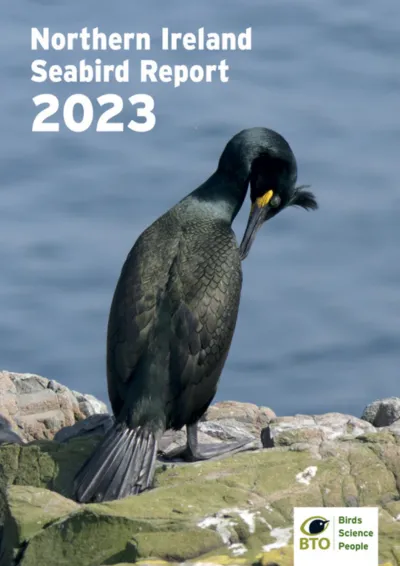
Foraging habitat selection by breeding Herring Gull (Larus argentatus) from a declining coastal colony in the United Kingdom
Author: Clewley, G. D., Barber, L.J., Conway, G.J., Clark, N.A., Donato, B.J., Thaxter, C.B. & Burton, N.H.K.
Published: 2021
New research from BTO has used GPS tracking to investigate the feeding preferences of breeding Herring Gulls at a declining colony, and found that these birds are more likely to be foraging on Mussels ...
25.08.21
Papers
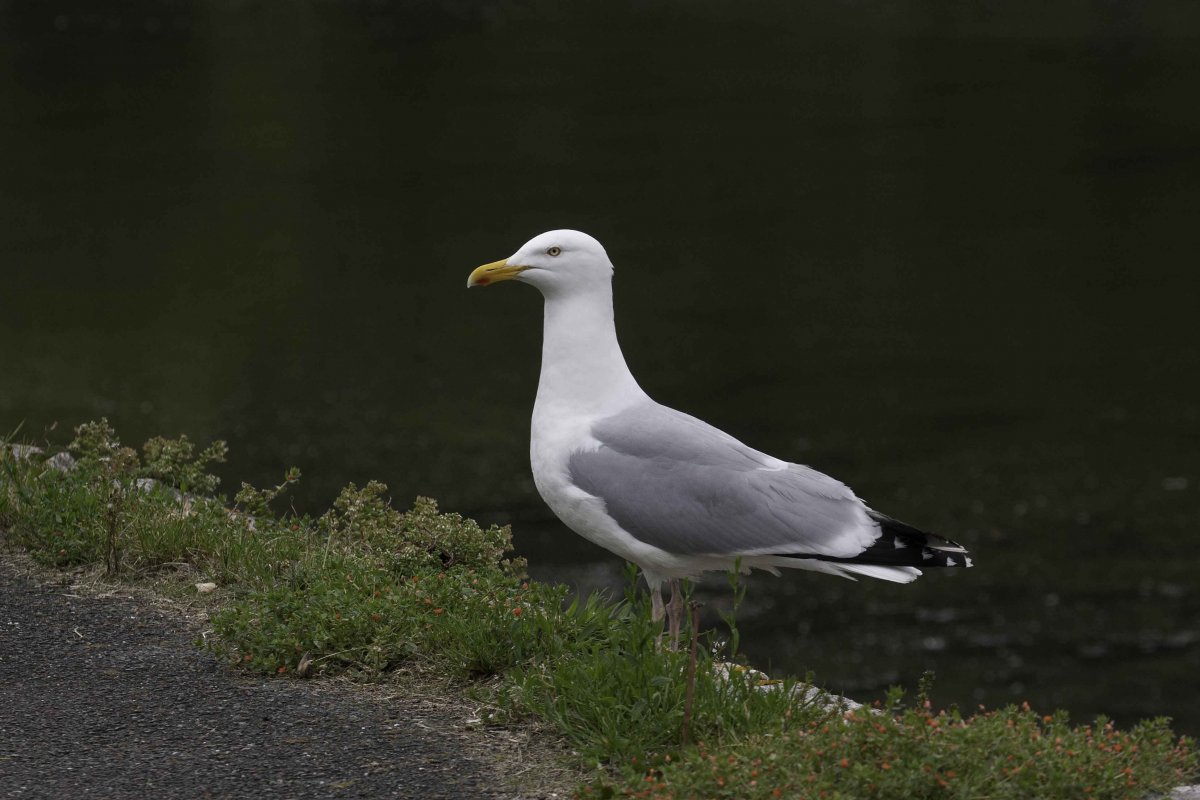
Assessing habitat use of Herring Gulls in the Morecambe Bay SPA using GPS tracking devices
Author: Chris B Thaxter, Gary Clewley, Lee Barber, Greg J Conway, Nigel A Clark, Emily S Scragg, Niall H K Burton
Published: 2018
Number of coastal Herring Gull populations have reduced markedly in recent years. The breeding gull colony of the South Walney and Piel Channel Flats Site of Special Scientific Interest (SSSI), within ...
05.02.18
Reports
Urban Breeding Gull Surveys: A Survey Design Simulation
Author: Chris B. Thaxter, Cat Horswill, Kathryn E. Ross, Graham E. Austin, Dawn E. Balmer and Niall H.K. Burton
Published: 2017
This report builds on Ross et al. (2016) using computer simulations to examine how survey coverage affects the precision of population estimates. This work will provide a first step towards improving ...
12.06.17
Reports
The avoidance rates of collision between birds and offshore turbines
Author: Cook, A.S.C.P., Humphreys, E.M., Masden, E.A., Band, W. & Burton, N.H.K.
Published: 2014
Report of work carried out by the British Trust for Ornithology in collaboration with the Environmental Research Institute on behalf of the Marine Scotland Science. Accurately estimating birds’ risk ...
03.12.14
Reports Other reports
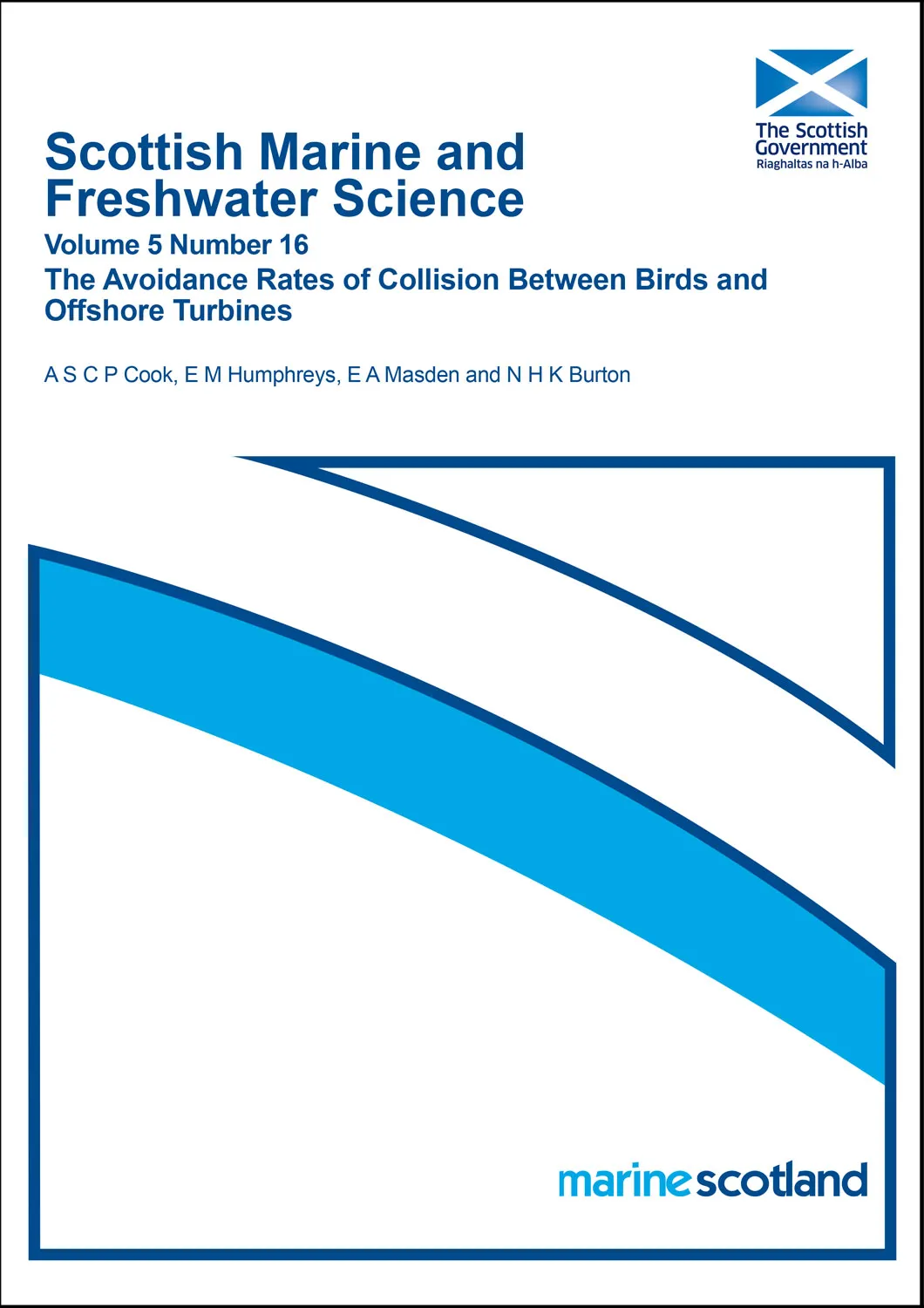
More Evidence
More evidence from Conservation Evidence.com
Partners
Citing BirdFacts
If you wish to cite particular content in this page (e.g. a specific value) it is best to use the original sources as linked in the page. For a more general citation of the whole page please use: BTO (20XX) BirdFacts Species: profiles of birds occurring in the United Kingdom. BTO, Thetford (www.bto.org/birdfacts, accessed on xx/xx/xxxx).

